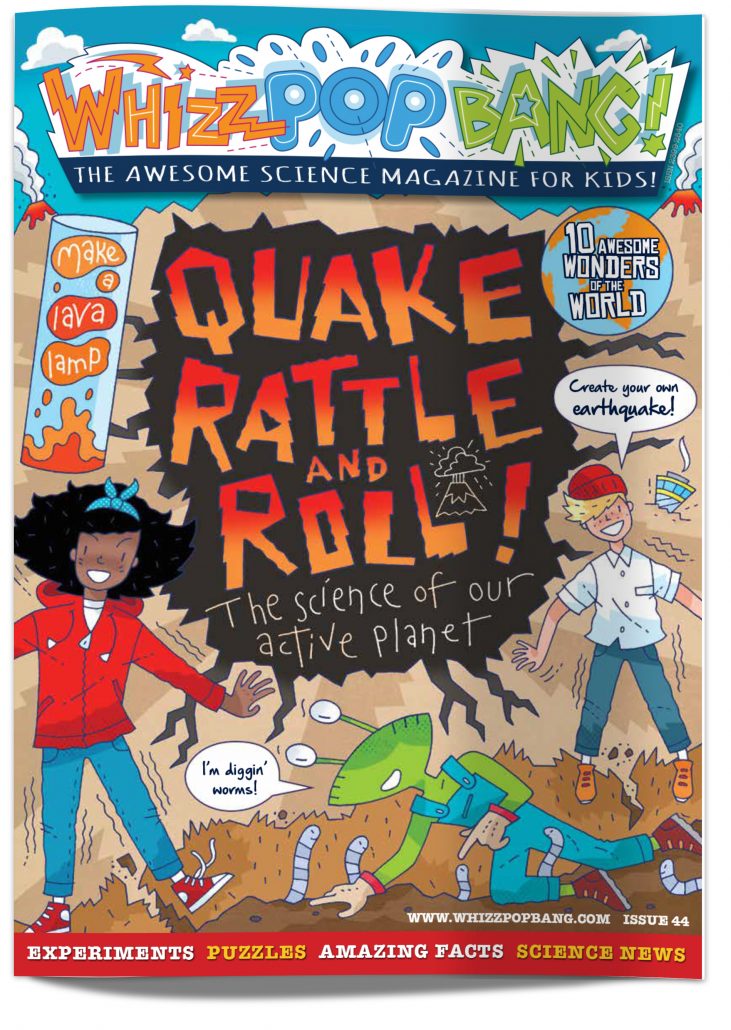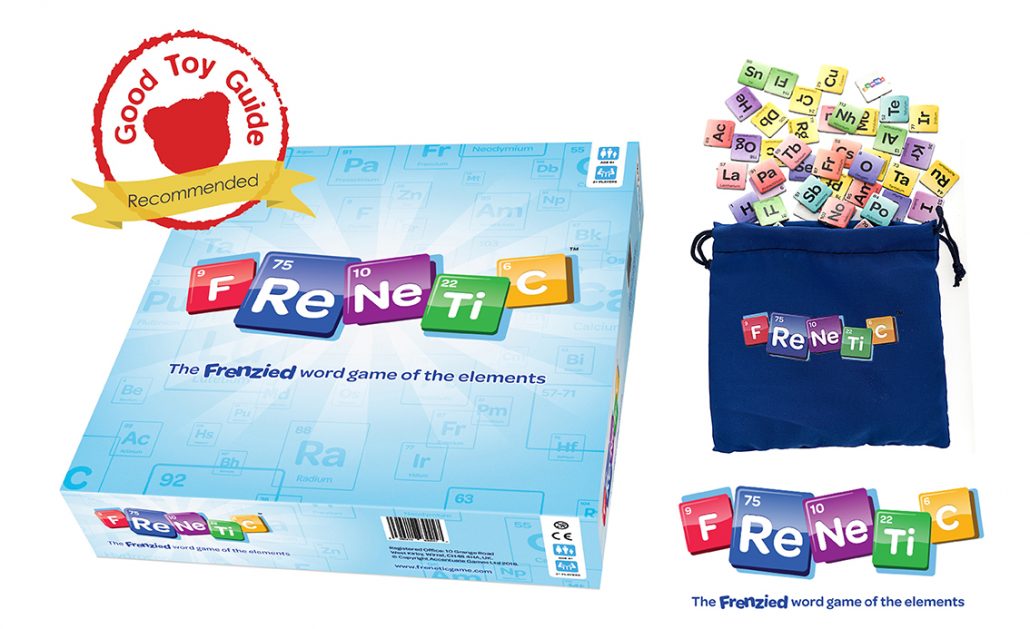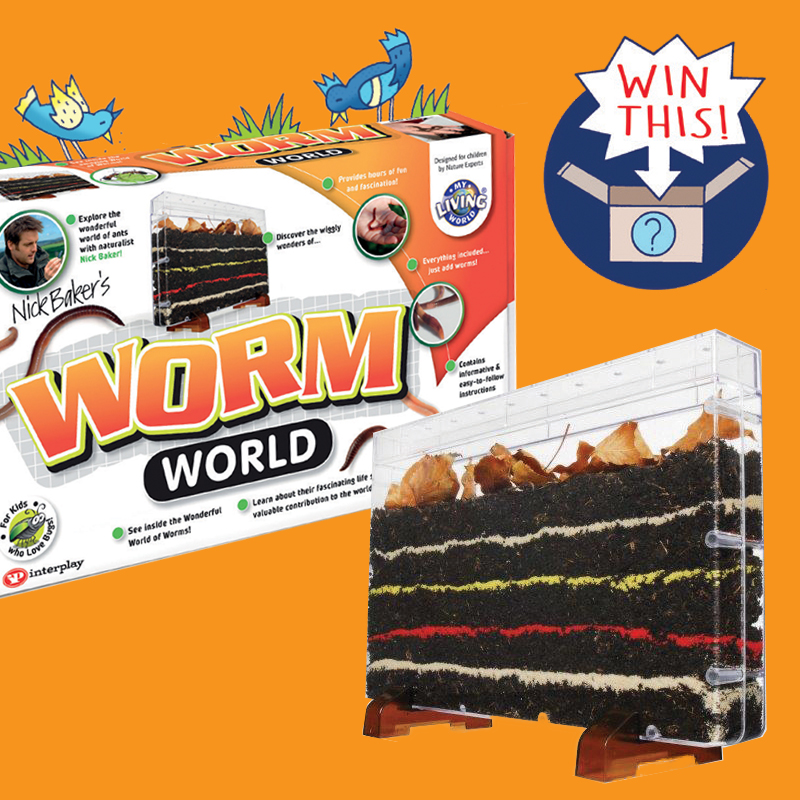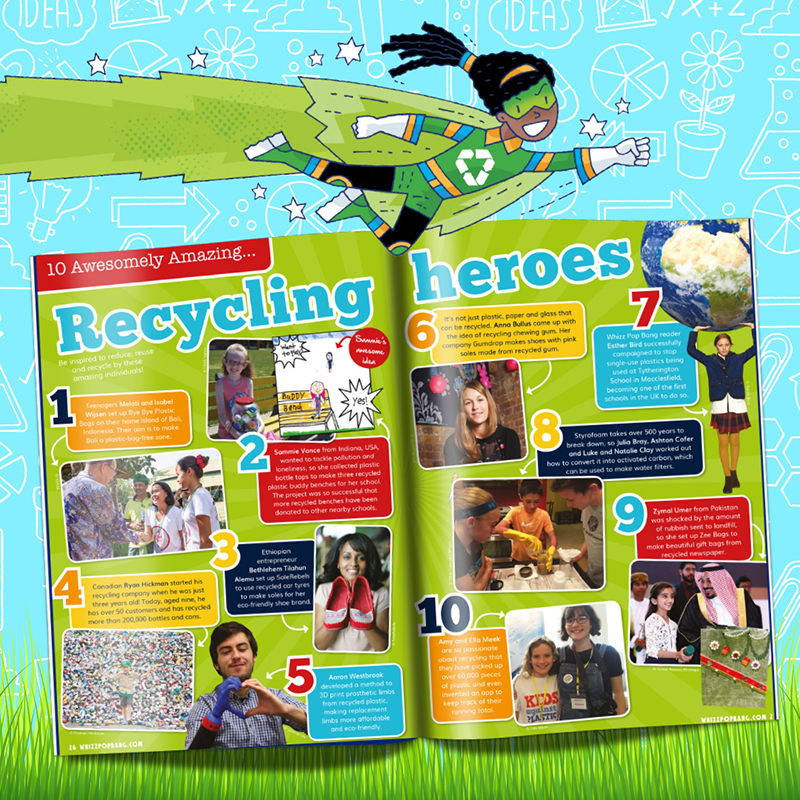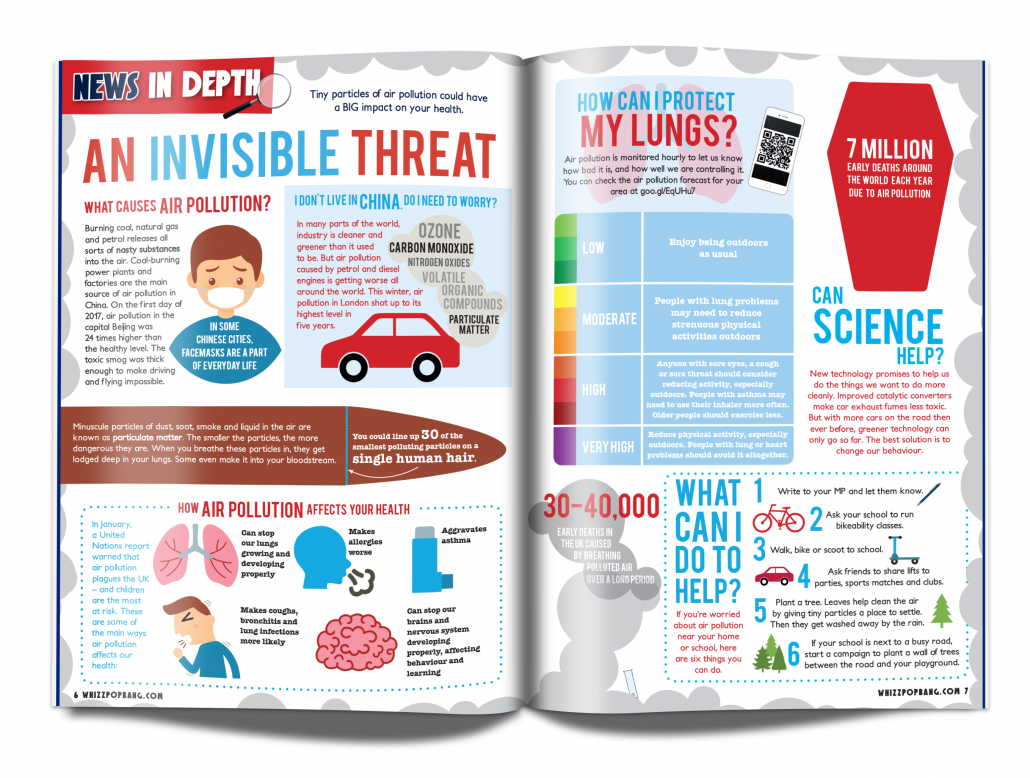The world famous Old Faithful geyser in Yellowstone Park in America is a vent in the Earth’s surface that spurts boiling water up to 40 metres into the air every few hours. Watch it in action here 👇🏾
This geyser is listed in our 10 Awesomely Amazing Geological Wonders featured in the Active Earth ‘Quake, Rattle and Roll’ issue of Whizz Pop Bang science magazine for kids.
